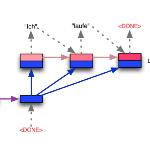The automation and digitalization of business processes has resulted in large amounts of data captured in information systems, which can aid businesses in understanding their processes better, improve workflows, or provide operational support. By making predictions about ongoing processes, bottlenecks can be identified and resources reallocated, as well as insights gained into the state of a process instance (case). Traditionally, data is extracted from systems in the form of an event log with a single identifying case notion, such as an order id for an Order to Cash (O2C) process. However, real processes often have multiple object types, for example, order, item, and package, so a format that forces the use of a single case notion does not reflect the underlying relations in the data. The Object-Centric Event Log (OCEL) format was introduced to correctly capture this information. The state-of-the-art predictive methods have been tailored to only traditional event logs. This thesis shows that a prediction method utilizing Generative Adversarial Networks (GAN), Long Short-Term Memory (LSTM) architectures, and Sequence to Sequence models (Seq2seq), can be augmented with the rich data contained in OCEL. Objects in OCEL can have attributes that are useful in predicting the next event and timestamp, such as a priority class attribute for an object type package indicating slower or faster processing. In the metrics of sequence similarity of predicted remaining events and mean absolute error (MAE) of the timestamp, the approach in this thesis matches or exceeds previous research, depending on whether selected object attributes are useful features for the model. Additionally, this thesis provides a web interface to predict the next sequence of activities from user input.
翻译:业务流程自动化和数字化导致信息系统中获取了大量数据,有助于企业更好地了解其流程,改进工作流程,或提供业务支持。通过预测当前流程,可以找出瓶颈,重新分配资源,并深入到进程实例(案例)状态(案例)中。传统上,数据以事件日志的形式从系统中提取,具有单一识别案例概念,如现金指令(O2C)流程的排序,但是,实际流程往往有多种目标类型,例如,目的、项目和软件包,因此,迫使使用单一案件概念的格式不能反映数据中的基本关系。为正确获取这些信息,采用了对象-内容日志(OCEL)格式。根据传统事件日志对数据进行定制,例如,对现金命令(O2C)流程的排序,对现金指令(GAN)来说,对现金指令(LSTM)的排序更快速,对目标错误(例如,目的、项目和软件包(LSTM)的精度(LSTM),对使用一个单一的选项,对单个的特性概念概念,不能反映数据序列(Seq2)的顺序。OBerma Restal-rietal-Lealalalals,可以将先前的序列中的数据添加成为Oral-liversal-Leal-lax。



